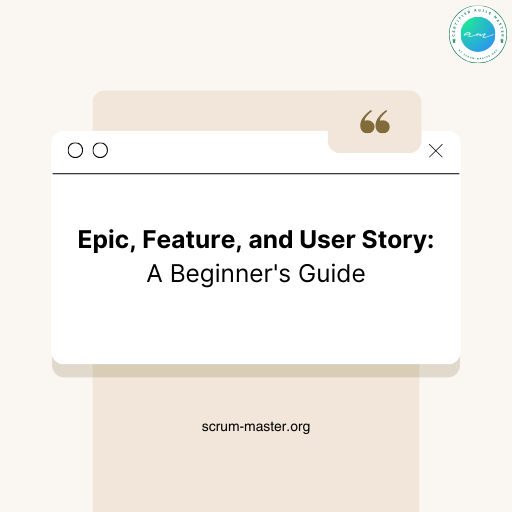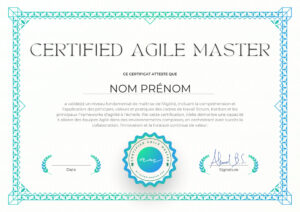The Daily Scrum Standup Meeting is a popular practice in agile software development, involving a daily 15-minute meeting of the development team. During this meeting, each team member answers three important questions: “What did I accomplish yesterday?”, “What am I going to accomplish today?” and “What are the obstacles that could get in my way?”.
The purpose of this meeting is to keep the whole team on the same wavelength, to ensure that everyone is aware of the progress made by other team members, and to quickly detect any obstacles that could prevent the team from moving forward towards achieving the Sprint goal.
This practice has become very popular as it keeps the team engaged, minimizes delays and promotes open and transparent communication between team members.
In this article, we’ll explore in more detail how the Scrum Daily Meeting works, the benefits it offers, the best practices as well as the bad practices you should avoid!
Index
The Scrum Master's role in a successful Daily Scrum
The Scrum Master plays a key role in facilitating the Daily Standup Scrum Meeting. The Scrum Master is responsible for ensuring that the meeting runs smoothly and efficiently, following the rules established by the Scrum method. Here are some of the Scrum Master’s main responsibilities during this meeting:
Ensuring that the meeting starts and finishes on time: The Scrum Master must ensure that the meeting starts at the agreed time, even if not all team members are present. The meeting must also end at the agreed time so that team members can get on with their work.
Encourage team members to focus on the three questions: The Scrum Master should ensure that team members answer only the three questions “What did I accomplish yesterday?”, “What am I going to accomplish today?” and “What obstacles might be in my way?”.
Facilitate discussion in the event of blockages: If a team member points out an obstacle, the Scrum Master must facilitate discussion to find a solution. He or she can help clarify the issue, ask further questions or set up an action plan to resolve the problem.
Enforce time limits for each team member: The Scrum Master must ensure that each team member has the same amount of time to answer the three questions. He can use a timer to ensure that each team member does not exceed the allotted time.
Keeping the meeting on track: the Scrum Master must ensure that the meeting stays on track. If a team member starts discussing a topic that is not relevant to the meeting, the Scrum Master must intervene to refocus the discussion.
Encourage open and transparent communication: The Scrum Master should encourage team members to communicate openly and honestly during the meeting, so that everyone is aware of progress and obstacles encountered.
In short, the Scrum Master plays an important role in facilitating the daily Scrum meeting, ensuring that all team members are able to communicate effectively and make progress towards their common goals.
The most common abuses of Daily Scrum
During my missions as a Scrum Master, I’ve heard a lot from teams where I’ve really felt their frustration around the Daliy standup meeting ceremony. It’s thanks to these professional experiences and discussions that I’ve found the inspiration to list here some of the abuses I’ve seen during Daily Scrum.
- Use this ceremony as a daily project follow-up meeting.
- The Scrum Master or a Tech Lead asks each person about the status of each User Story.
- The Daily Scrum lasts 30 minutes or more.
- The meeting proceeds slowly, as the team listens whilethe Scrum Master or Tech Lead updates the tasks in an online tool (Jira or similar).
- The daily melee is used to reinforce positions of power. It’s now a place where the Dev-Team is told what to do on a daily basis.
- Team members are disconnected and don’t listen to each other.
- Team members don’t ask for help from other team members, even if they’re stuck.
- Obstacles are not addressed, or are quickly raised and not acted upon by the Scrum Master or other team members.
- Development team members sometimes attend several Daily Meetings or follow-up meetings to give a status report on their User Stories, and this eats up their whole morning. (Note that this is not the fault of the daily scrum, but rather because someone assigned this development team member to work on multiple Scrum teams in order to get more done).
- The Scrum Master takes notes during the meeting and publishes them as meeting minutes. I often see this when SAFe is implemented in the organization.
- The meeting is delayed until the Scrum Master, PO or Project Manager arrives, or worse, the team is forced to restart the meeting for the PO or Manager who arrived late.

Causes of Daily Scrum Meeting problems
Most of these abuses have nothing to do with the Daily Scrum Meeting itself. For me, it has more to do with a lack of understanding of the Scrum method.
I see at least four root causes of these problems:
- Lack of Scrum Master facilitation. Either the Scrum Master doesn’t have the skills or knowledge for the job, or they combine the Scrum Master role with a project management role (Project Manager, Business Analyst, etc.).
- The development team is not properlyempowered, trained or supervised.
- The organization doesn’t really apply Agile. Some professionals are still doing what they did before adopting Scrum. But now they’re using Scrum terms and aspects, without having the Agile mindset or wanting to apply all the rules and practices of this framework.
- The rise of telecommuting in the post-Covid19 era has led to a need, for some managers, for closer monitoring of their teams’ work. This translates into direct abuse of the Daily Scrum, which becomes a project follow-up meeting. If you find yourself in this situation, stop Daily Scrum right now.

My Daily Scrum lasts too long. How can I shorten it?
I’m answering a question I’m often asked! If your Daily Scrum Meeting goes on too long, here are some tips to help you fix it:
Limit speaking time: Set a maximum time limit for each meeting participant. We recommend that each team member be allocated a maximum of 1 to 2 minutes. This will ensure that everyone speaks quickly and doesn’t monopolize the meeting.
Be concise: It’s important for each team member to be concise and direct in their answers to the three questions posed. They need to provide enough information to keep the team informed of their progress and potential obstacles, but without going into too much detail.
Stay focused: It’s essential to stay focused on the questions posed and avoid diverting to other topics or issues not relevant to the meeting.
Focus on the essentials: steer discussions towards the most urgent/priority topics. Only share blockages or information that may be of interest to everyone.
Identify recurring problems: If recurring issues come up during the meeting, it’s best to address them at another time outside the daily Scrum meeting. Team members can discuss the situation with each other to find solutions and make suggestions for improvement.
By applying these tips, your Daily Scrum Meeting should become more efficient and productive, while keeping the team informed and engaged in the project’s progress.
To find out more, see the definition of the Daily Scrum meeting in the Scrum Guide 2020.
The purpose of the Daily Scrum is to inspect progress towards the Sprint Goal and adapt the Sprint Backlog if necessary, adjusting future planned work.
The Daily Scrum is a 15-minute event for Scrum Team Developers. To reduce complexity, it is held at the same time and place, every working day of the Sprint. If the Product Owner and/or Scrum Master are actively working on elements of the Sprint Backlog, they participate as Developers.
Developers can choose whatever structure and techniques they like, as long as their Daily Scrum focuses on progress towards the Sprint Goal and produces an action plan for the next working day. This allows them to focus and improve self-management.
Daily Scrums improve communication, help identify obstacles, promote rapid decision-making and, as a result, eliminate the need for further meetings.
The Daily Scrum is not the only time when Developers are allowed to adjust their plan. They often meet throughout the day for more detailed discussions on adapting or re-planning the rest of the Sprint’s work.










